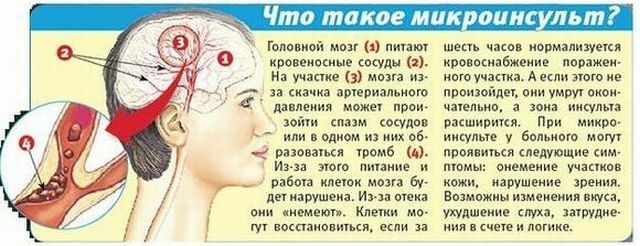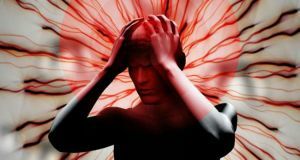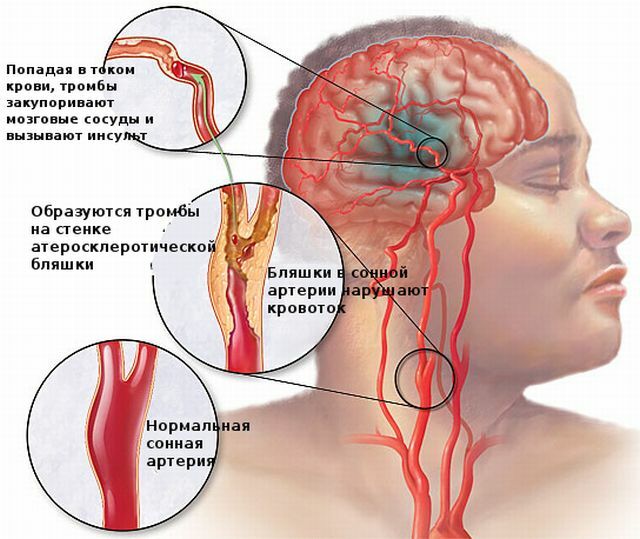Exercising after a stroke allows you to return the limbs motor activity, to restore the articulation and speech. To recover all lost functions, it will take a long time, and a positive result will be achieved only with regular and duration of the treatment course.

benefits loads
Rehabilitation exercises after an ischemic stroke - is mandatory, and the main component of the rehabilitation period. Regular, moderate and correct load exercise therapy after stroke:
- relieve muscle hypertonicity, kupiruya thus contributing to symptoms of paralysis and rapid recovery of physical activity;
- reduced motility and return the accuracy of all movements;
- normalize blood circulation;
- restore the power supply and soft tissues with oxygen and cells, thus activated regeneration.
In patients who had a stroke and hard for a long time are, physiotherapy prevents pressure sores on the body due to the normalization of blood circulation to the soft tissues. Rehabilitation after stroke at home It is carried out only after the first stage of recovery in the hospital inpatient be held. To move from the easiest to the more difficult lessons should be gradual.
passive load
Among all the exercises exercise therapy occupies a special place passive gymnastics, which takes place in the first days after the onset of stroke, when a person needs complete bed rest.

Passive gymnastics - it exercises on flexion and extension of limbs in patients stranger. It carried out such a passive physical rehabilitation gradual and includes the following exercises after stroke:
- flexion and extension of fingers, careful rotation of the metacarpophalangeal joints;
- rotational movement of the wrist;
- flexion movement of the elbow joint;
- movement of the shoulder girdle;
- repetition of exercises for the lower limbs.
To fix in bedridden insultnikov muscle spasms, it recommended the implementation of passive exercises with fixing by bent limbs. Hand flexes the elbow and fixed to a stick so that when muscle spasm is not bent back.
Permissible length of limb position in the unbent state latch should not exceed half an hour a day. It conducted such exercises only in the event that these exercises do not cause patient discomfort.
active exercises
When the state of stroke patients will be stabilized, you can proceed to the second phase of training for rehabilitation - to strenuous exercise.
With the improvement of the condition and the gradual recovery of motor functions of a complex of exercises exercise therapy for stroke includes movement performed in the supine position. Then you can proceed to the exercises in a sitting position. If these steps have passed without complications and the patient can get up and walk a little, the exercises are performed in a standing position.
In the supine position
Recommended that such exercises:
- Rehabilitation exercises are done with a cloth or towel that you want to hang over the bed. The patient, grabbing a hand towel, bend and unbend the arm at the elbow. When this action will turn out well, towel hung above.
- For the second exercise need physical therapy in stroke ring with a circumference of 40 cm. Ring snaps at hand, the task of man - stretch ring, straining muscles. First, such an exercise is done with the hands, and then with the feet.
- A more complex exercise - patient grabs the back of the bed and tries to get up, utilizing at the same time the lower extremities.

From a seated position
Charging should be carried out regularly, several times a day, every time you need to increase the number of approaches:
- The patient should sit on the bed, his feet sank to the floor, his hands holding the headboard. From this position you need to bend your back at the waist on the breath, the maximum bulging chest forward. Breathe out, relax it, returning to its original position.
- From a sitting position to lift each leg alternately.
- Put under the small of the back cushion or pillow to embrace first one leg and pulling her to him, try to touch the knee to the chest.
- Bring him into a sitting position hands behind his back, his hands to rest in bed. Breathe in, try to close the blade at the same time diverting traffic to head back.

From a standing position
When you perform rehabilitation exercises with a standing position, it is important not to hurry and not to worry if something does not turn out right the first time. You need to do the following:
- To lift a small object on the table, for example, matchbox, further clips. If this exercise was good at it, items are placed on the floor, with which they will need to raise.
- Hands raised over head, try to put your feet on your toes. On the exhale, return to the starting position and relax.
- Put your feet shoulder width apart, put his hands on the sides of the belt. From such a position to make the slopes in different directions.
- Hands with straight elbows to put in front of him, making swings, alternately crossing over the limb.
- With his hands on the belt to make the body turns in a clockwise direction and then in the opposite direction.
When these exercises will not cause the patient difficulty for charging stroke complicated. You can start walking in one place and make your feet alternately swings, trying to reach the palm arm. Physical training after stroke in a standing position can initially be carried out with the support of another person.
For eyes
"Eye" exercises for recovery after stroke is important. It's not just that you need to restore visual function. Special exercises are designed so that they tighten and restore the strength and elasticity of visual muscle and normalize state of the nerve endings, help restore coordination.

Every waking moment the patient is advised to take up any object and moving it, monitor it through the eyes, making no turns his head. Commit such actions are recommended and at a time when the patient is still lying.
The second exercise is more complicated: a view still focus on one thing, head to make a slight slope, alternately in left and right side.
For hands
Physical rehabilitation includes various exercises to restore muscle tone of the upper limbs:
- Close my fingers into the lock, lift the arms up to the elbows bent open. Stand still at the top, to make movements as if the need to disengage the fingers. Duration of performance - it is not a feeling of fatigue appear.
- Touch the right hand of the left ear with his left hand - his right ear.
- At the same time, cross over your elbows touch the ears.
Physiotherapy in stroke hand includes movement on the development of fine motor skills: to draw on the sheet and try to get a point in her pen.
For legs
Therapeutic exercises in stroke for the lower extremities is aimed at increasing muscle tone and restore elasticity and mobility of the tendons. It includes the following set:
- Stand up straight, turned to the wall and putting his hands on her, that they were at the level of the chest. Make movements like pushups, slightly bending your elbows and chest leaning forward. When performing in the thighs and lower legs should feel tension.
- From the supine position the abdomen up, tear from foot floor, move it through the second limb to the other side, to stand still in this position for a few seconds, return to the starting position and repeat on the other leg.
- Lie on your side, legs bent at the knees, feet are on each other. To lift up the leg, bent at the knee as high as possible, at the peak of freeze, back, leisurely pace back. Turn over and repeat.
- Lying on your back, arms straighten, arrange the sides of the body. Legs bent at the knee, feet to close, pull up as close to the hips. Slowly make slopes serried feet to the right, then the left side.

to articulate
The complex is on the articulation ensures that it is restored. Regenerative gymnastics after stroke includes:
- tongue protruding as far as possible;
- tongue licking lips clockwise and counterclockwise;
- biting the upper and lower lips;
- traffic circle language;
- twisting language muscle into a tube;
- clicking of the tongue.
To restore it, you need to learn to pronounce the individual sounds. When both vowels and consonants separately well-received, it is worth trying to pronounce the individual, the simple words: "Dad," "Mom." Only after fixing the results allowed to move on to the pronunciation and repetition of the more difficult words.
Breathing exercises
Exercises after stroke at home include breathing exercises, which stimulates blood circulation, it helps to restore all life support systems.
Gymnastics respiration is to perform a deep breath, breath holding and slow exhalation. After an approach should be made to rest. During the execution of breathing exercises it is recommended to pay attention to their condition. If there was dizziness, exercises should be terminated.

When the breath to breath-hold will be good at it, there will be dizziness, can complicate the exercise, trying to inflate balloons and blow into a cocktail straw, lowered into the water.
Trainers
A set of exercises for stroke simulators provides recovery of motor functions. There are special exercise equipment to help carry out passive exercises for patients who still need to comply with bed rest. Apparatuses useful for passive gymnastics paralyzed patients. Regular development helps prevent muscle atrophy, increases the likelihood that the patient will eventually be able to fully recover.
Simulators for hands contribute to the development of the muscles of hands, forearms and shoulder girdle, leg - developing hip joint, knee, ankle and foot.
In bedridden patients using simulators with electrical muscle stimulation. They create a surge voltage, affecting deeper muscle fibers.
Contraindications
Exercise therapy in ischemic stroke is not allowed to be carried out in the following cases:
- disruption of the heart muscle;
- severe intoxication accompanied aching muscles and joints, increased body temperature;
- heart failure in acute or chronic form;
- pulmonary edema with respiratory failure;
- elevated blood pressure.
In cases where the patient without any complications suffered a stroke until you have passed the crisis period, to start reducing the gym can not. It is forbidden to carry out rehabilitation exercises to patients who undergo intensive therapy.



